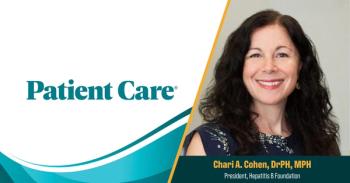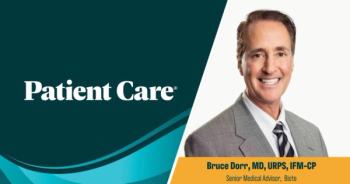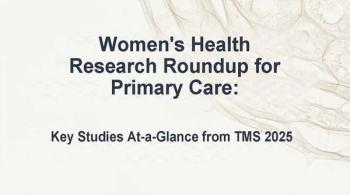
Musculoskeletal Hits Top 10 in Primary Care Visits
For key facts and figures about musculoskeletal disorders, perhaps a surprise as the fourth leading diagnostic category in primary care, see the pages that follow.
Musculoskeletal Makes Its Bones in Primary Care
Musculoskeletal disorders encompass rheumatologic diseases (rheumatoid arthritis [RA], osteoarthritis) and orthopedic conditions (back pain, sports injuries), so patients with these problems might be expected to pay more visits to rheumatologists and orthopedic surgeons than to other health care professionals.
In fact,
Of the total ambulatory care visits to physician offices and hospital outpatient and emergency departments for diseases of the musculoskeletal system and connective tissue in 2009-2010, 37% were to primary care offices, compared with 31% to surgical specialists and 16.5% to medical specialists.
Why? Perhaps because patients who have muscle, bone, and joint concerns often go to their primary care physician first. In many cases, the primary care physician can make the proper diagnosis and treat the problem. In others, the primary care physician makes an appropriate diagnosis and then refers the patient to a rheumatologist or orthopedic surgeon for treatment.
This article, the fifth in a series on “Top 10 Reasons Why Patients Come to Primary Care,” reports on visits for diseases of the musculoskeletal system and connective tissue.
See the pages that follow for key facts and figures about musculoskeletal disorders, perhaps a surprise as the fourth leading diagnostic category in primary care.
More Than 100 Million Visits for Musculoskeletal
• Almost 105 million of the more than 1.25 billion ambulatory care visits to physician offices and hospital outpatient and emergency departments in the United States in 2009-2010 were for diseases of the musculoskeletal system and connective tissue.
• Of these visits, 39 million were to primary care offices, 32.4 million to surgical specialists, and 17 million to medical specialists.
• For osteoarthritis and allied disorders, 3.5 million visits were to primary care offices (31% of visits, compared with 54.5% and 8% of visits to surgical specialty and medical specialty offices, respectively).
• Six million of the more than 17 million visits for “derangements and other unspecified disorders of joints” went to primary care (35% of visits vs 37% and 10% to surgical specialty and medical specialty offices, respectively).
• More than three-fourths of visits for RA were to medical specialty offices.
Front Line Musculoskeletal Disorders: Back Pain
• In a 3-month period, about one-fourth of US adults experience at least 1 day of back pain.
• Many medical problems can cause or contribute to back pain, including various forms of arthritis.
•
Osteoarthritis: Leading Cause of Disability
• Osteoarthritis is the
• Osteoarthritis tends to occur in the hand joints, spine, hips, knees, and great toes.
• The lifetime risk of knee and hip osteoarthritis is about 46% and 25%, respectively.
Fibromyalgia: “It’s All in Your Head!”
•
• Between 80% and 90% of those who receive the diagnosis are women, but men and children can be affected.
• Patients typically see many doctors before they receive the diagnosis, possibly because pain and fatigue, the main symptoms, overlap with those of many other conditions.
• Because there is no generally accepted, objective test for fibromyalgia, some doctors conclude that a patient’s pain is not real-“It’s all in your head!”
Slowing RA With Treatment Advances
•
• RA is one of the most disabling types of arthritis.
• Treatment advances have made it possible to stop or at least slow the progression of joint damage.
Osteoporosis and Fracture Risk Increase With Age
• Persons older than 50 years are at
• Osteoporosis is more common in older women, mainly non-Hispanic white and Asian women, but can occur in men and children and in all ethnic groups.
• Major risk factors that cannot be changed include older age, non-Hispanic white or Asian ethnic background, and small bone structure.
• Risk factors that might be changed include low levels of sex hormone, anorexia nervosa and bulimia, and cigarette smoking.
• Another 22.7 million women and 11.8 million men older than 50 years have osteopenia.
Gout Still Affects Mostly Men
•
• Gout is strongly linked to obesity, hypertension, hyperlipidemia, and diabetes.
• The treatment goal with medications is a uric acid level lower than 6 mg/dL.
Psoriatic Arthritis Can Begin Early
• Psoriatic arthritis usually appears in persons aged 30 to 50 years but can begin as early as childhood. Men and women are equally at risk. Children with psoriatic arthritis are at risk for uveitis.
•
• Persistent inflammation with psoriatic arthritis can lead to joint damage. Psoriatic arthritis can affect any joint in the body. Early diagnosis is important.
Sports Injuries: When to Refer?
• Severe sports injuries need to be seen immediately in an emergency department.
•
• Appropriate referrals may include an orthopedic surgeon for diagnosis and treatment and a physical therapist/physiotherapist for rehabilitation.
Musculoskeletal Physician Visits by Body Part: Knees First
• Knee: 18.6 million
• Back: 13 million
• Shoulder: 11 million
• Lower back: 8 million
• Leg: 7.8 million
• Neck: 7.6 million
• Hand and finger: 7 million
• Foot and toe: 6.3 million
• Hip: 4 million
• Ankle: 3.9 million
• Wrist: 3.4 million
• Arm: 3.2 million
• Elbow: 2 million
Source: Department of Research & Scientific Affairs, American Academy of Orthopaedic Surgeons. Physician Visits for Musculoskeletal Symptoms and Complaints.
More to Come
• In the first article in this series, “
• The second article highlighted the
• In the third article, we featured the
• The fourth article covered the
• This fifth article reports on diseases of the musculoskeletal system and connective tissue, the fourth leading diagnostic category in primary care.
• Next up: Nervous System and Sense Organs
Newsletter
Enhance your clinical practice with the Patient Care newsletter, offering the latest evidence-based guidelines, diagnostic insights, and treatment strategies for primary care physicians.


















































































































































































































































































